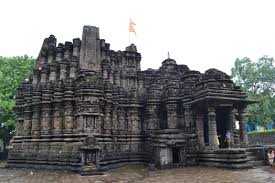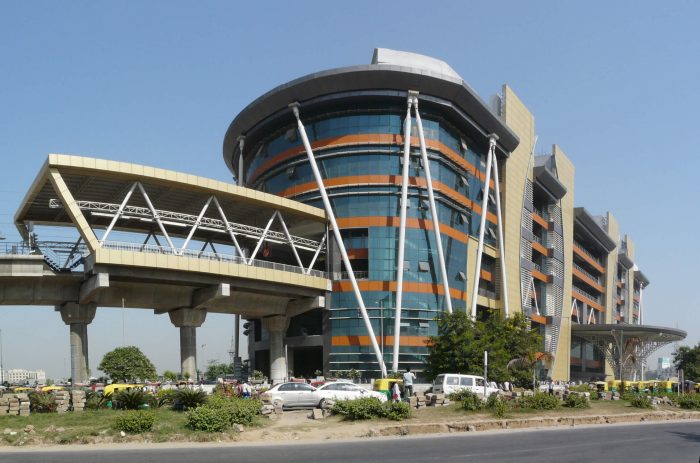> > India >> States >> Uttar Pradesh
History of Ghaziabad
Ghaziabad City and the District of the same name are part of the Uttar Pradesh State of India. It lies on the GT road about 2km east of the Hindon river, 19 Km. east of Delhi and 46 Kms. southwest of Meerut. Loni and Baghpat lie in the northwest and Hapur and Garhmukteshwar in the east.
It is an important station on the Northern Railway where railway lines, from Delhi to Calcutta, Moradabad and Saharanpur meet, connecting it with many important cities of India. As its boundary is adjacent to Delhi, It’s part of the National Capital Region and it acts as the main entrance of Uttar Pradesh which is why it is also called the GATEWAY OF U.P.
The Ghaziabad History - How it came into existence
Ghaziabad was founded in 1740 by the vizir, Ghazi-ud-din, who called it Ghaziuddinnagar after himself. After the opening of the railway line, the name of the place was shortened to Ghaziabad. The history of the development of the present-day Ghaziabad district can be traced back to 14th November 1976. Before this Ghaziabad was the Tehsil of District Meerut. UP Government declared Ghaziabad as a district on 14th November 1976. Ghaziabad, Dadri, Hapur, and Garhmukteshwar were its first four tehsils.
Later on September 30, 1989, Modinagar was given the status of Tehsil. In 1997 Dadri tehsil of Ghaziabad along with Noida was incorporated in the new district of Gautam Budh Nagar. The new district of Hapur was created from the tehsils of Hapur, Garhmukteshwar, and Dhaulana on 28 September 2011.
Culture and Heritage
Civilization in around Ghaziabad district dates back to 2500 BC and it has been proven from the research work and excavations done in the district. the excavation was carried out at the mound of Kaseri situated on the bank of river Hindon, 2 km north of Mohan Nagar. Garhmukteshwar situated on the banks of the river Ganga is associated with the Mahabharat period. Nearby is the Ahar region which was supposed to be the capital of Pandava’s and Janamejay’s Nag yagya site. The Loni fort is associated with the Lavanasura of the Ramayana period. As per the Gazetteer, the fort was named after Lavanasura (from Lavana it changed to Loni).
On the eastern border of the district is situated the village “KOT” which is associated with the famous emperor Samundra Gupta, who performed the Aswamedha yagya here after destroying the fort and “Kot Kuljam” (princes of the Kot dynasty), which was an incident of great historical importance at that time. During the region of Sultan Muhammad-bin -Tuglak in 1313, this entire region had become a huge battlefield. The importance of Loni increased during the Mughal period as the Mughal King used to come here for hunting and pleasure trips. A Baage Ranap is a memorial of that period.
In Medieval times much great war was fought in this area. The Kot war in the fourth century was fought at Loni and the war between Taimur and the Indian warriors was fought at Surajpur.
The Maratha-Mughal war, the war between the ruler of Bharatpur King Surajmal and Najib on the banks of the Hindon river, and the war in 1803 between Sir General Lake and the Royal Maratha army were fought here but the most important war was fought at the banks of river Hindon on 30-31 May 1857 with the British. This was the first war of independence during the 1857 war, the entire district witnessed scenes of this public war.
Apart from this many villages and sub-urban areas of this district name in store a number of places of fame and glory since the ancient colony of money lenders at Dasna who lent money to the Kings, Muradnagar which was established by Murad Begamabad (presently Modinagar) the famous Maratha General Mahadjin’s daughter Balabai’s jagir Jalalabad, center of the 1857 revolution Hapur, Royal elephant farm and later Horse farm during the British period at Babugarh, etc. are famous historical places of this area which occupy a dignified place in the history of this district.
sources: https://ghaziabad.nic.in/
Ghaziabad - The Modern Industrial City
As per provisional reports of the Census of India, the population of Ghaziabad in 2011 was 27,05,849. It’s close to the NCT of Delhi & part of the National Capital Region. Ghaziabad is a major Industrial district of Uttar Pradesh.
Over the years, planned Industrial development saw participation from major industrial houses of the country including Mohans (Mohan Nagar Industrial Estate), Tatas (Tata Oil Mills), and Modis (Modinagar). International Tobacco Co. Shri Rams (Shri Ram Pistons, Daburs & Jaipurias, etc. The city is a part of the Ghaziabad (Vidhan Sabha) constituency and Ghaziabad (Lok Sabha) constituency.
Know more about Uttar Pradesh


